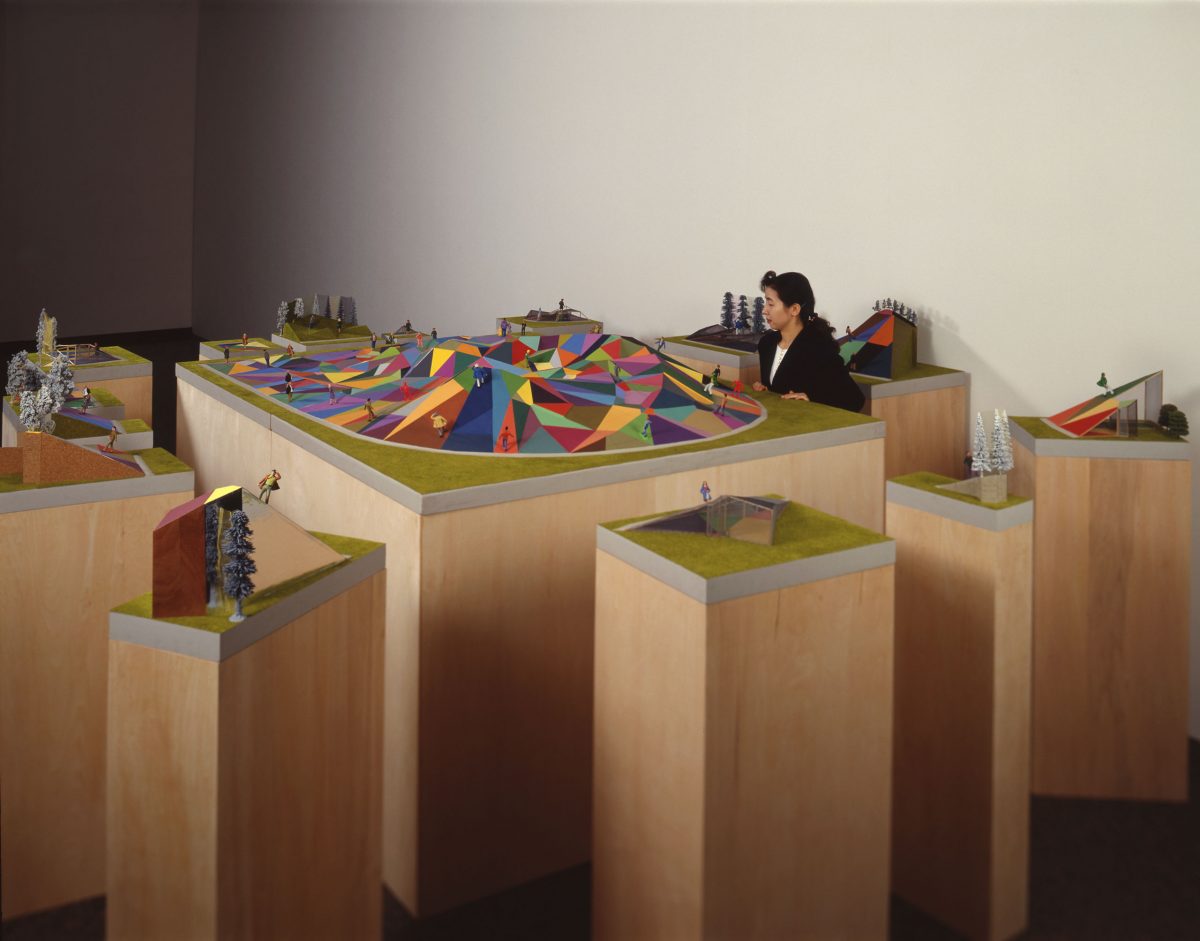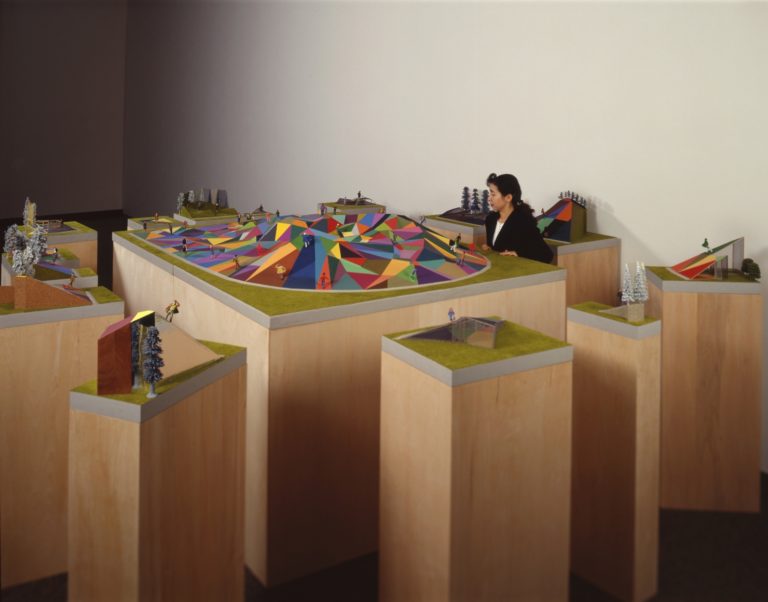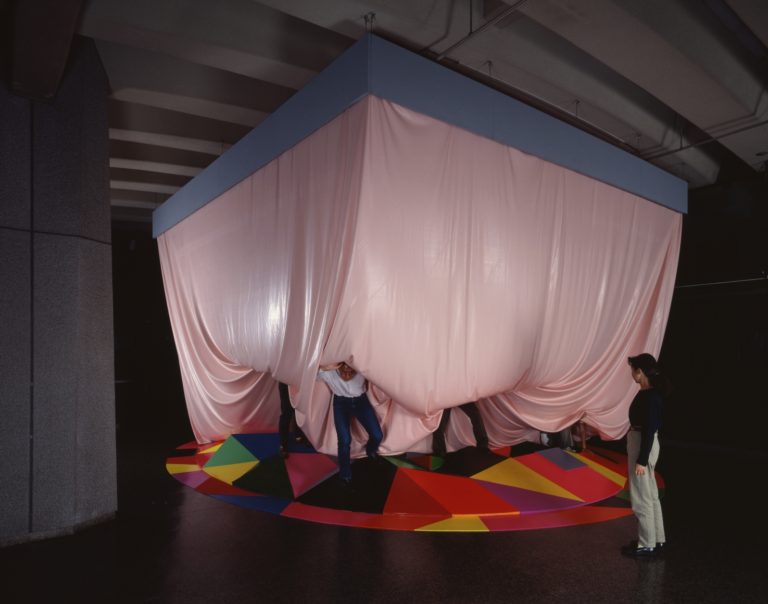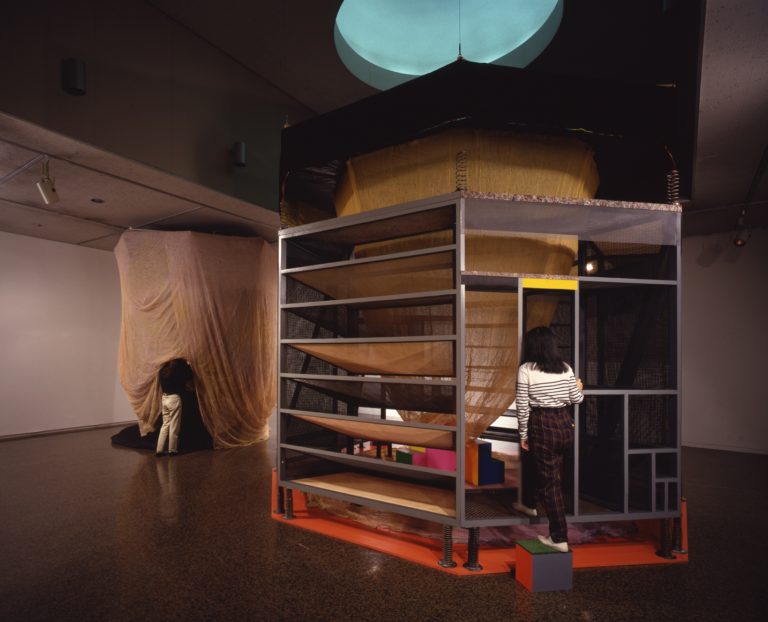In The Mechanism of Meaning, Arakawa and Madeline Gins employed the philosophy of language to investigate the relationship between words and signs and identify paradoxes of meaning. Drawing on these findings, they engaged all the senses as part of their research project that lead to their inquiry into three dimensional spaces and eventually permanent structures. Arakawa and Gins explored these ideas through drawings, models, and installations to develop their theory and then application of ‘procedural architecture.’
In the exhibition Building Sensoriums 1973-1990 at Ronald Feldman Fine Arts, New York, Arakawa and Gins showed for the first time their ideas for learning through the experience of architecture. As part of the exhibition, the installation Stuttering God 1988-90 required the viewer to move through a labyrinth in total darkness encountering different textures and forms and the occasional sliver of light to suggest the existence of alternate spaces. They described the work as a ‘landing site,’ “a kind of destination where the self is constantly reborn.” Also included in the exhibition was the 42 foot long model The Process in Question/Bridge of Reversible Destiny 1973-1989. Developed in 1987 as a 140-meter bridge over the Moselle in Epinal, France, the proposed structure consisted of 21 sections that each offered different spatial experiences. Realized in the form of a number of different models and drawings, Arakawa and Gins explored the possibility of the bridge as the site for a number of transformative rites of passage.
These experimental works provided the basis of what became known as ‘procedural architecture’ as detailed in Architectural Body (University of Alabama Press, 2002). In this book, Arakawa and Gins questioned “the attitude of pursuing comfort blindly,” and suggested that the built environment should constantly challenge and surprise our senses. Through the adoption and application of ‘procedural architecture,’ we are invited to question everything around us, even mortality itself.






